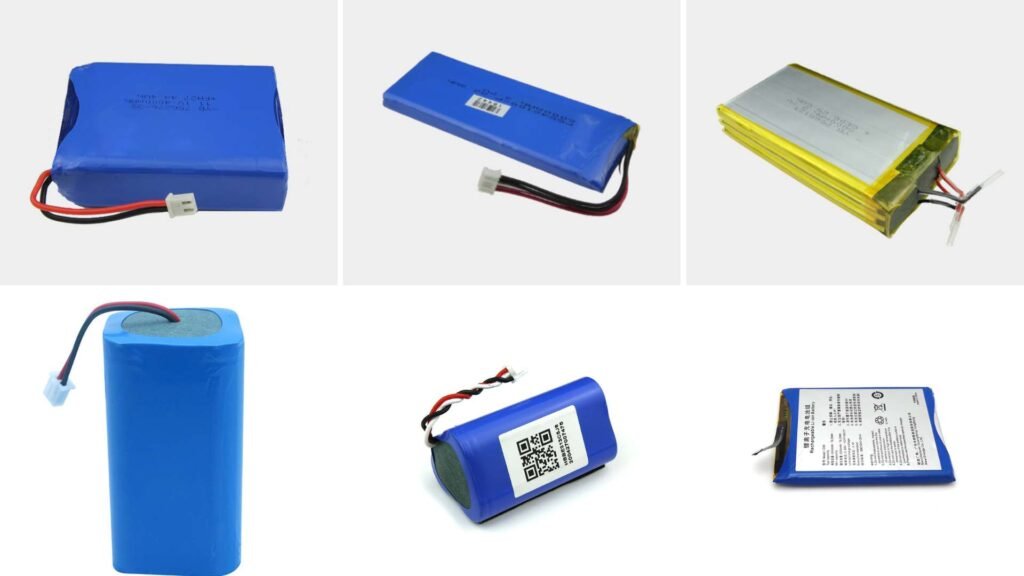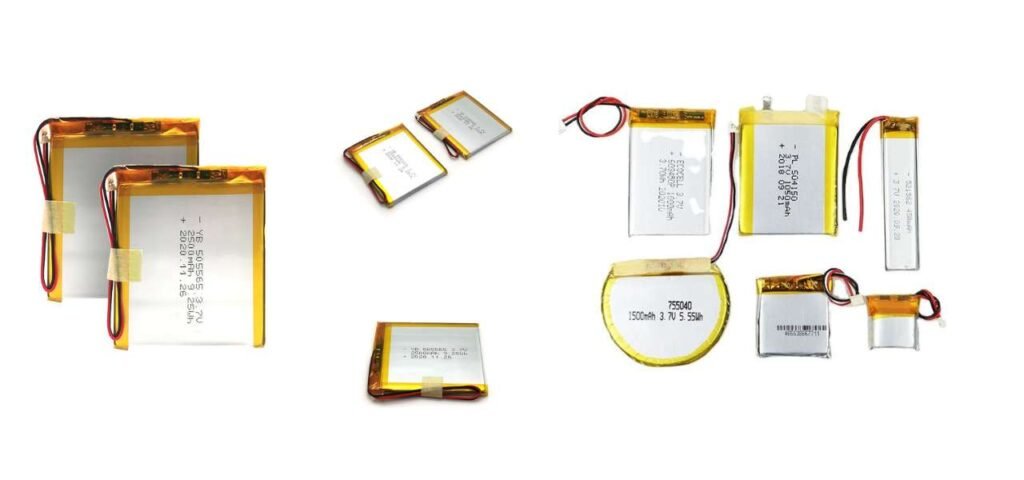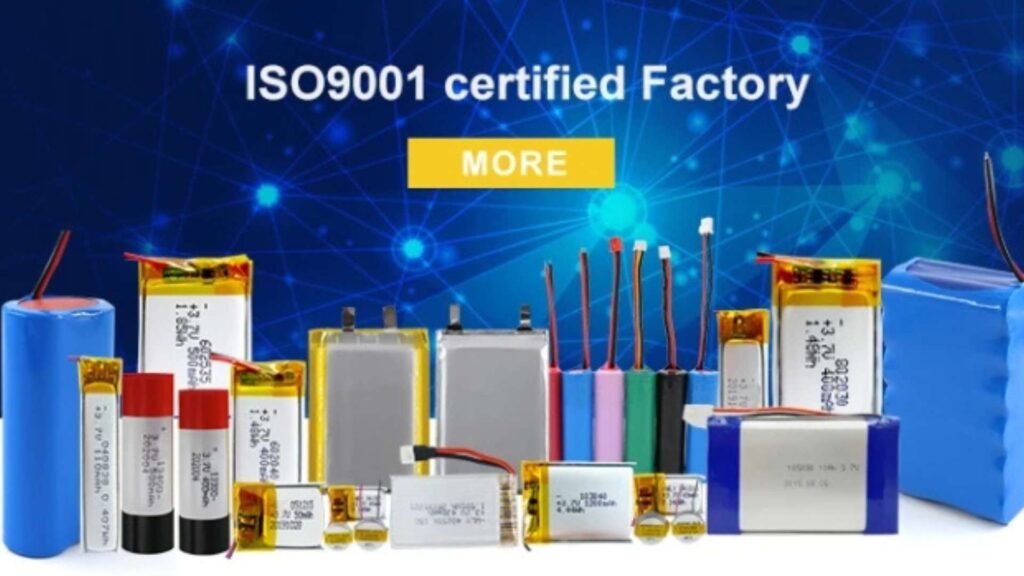1.Definition of Rechargeable Lithium Battery
A rechargeable lithium battery, also known as a lithium-ion battery, utilizes lithium-ion chemical reactions to store and release energy. During the charging process, lithium ions from the positive electrode material (typically lithium cobalt oxide) migrate to the negative electrode (usually graphite), while during discharge, these lithium ions move in the opposite direction. As this reaction is reversible, lithium batteries can undergo multiple charge and discharge cycles, hence termed as rechargeable batteries. Widely used in various electronic devices such as smartphones, laptops, digital cameras, they offer high energy density, long lifespan, and relatively low self-discharge rates.

2.Why Lithium Batteries are Rechargeable
The rechargeability of lithium batteries stems from the reversibility of their internal chemical reactions. During charging, lithium ions are released from the positive electrode (typically lithium cobalt oxide) and migrate to the negative electrode (usually graphite). This process is reversible, and during discharge, lithium ions move from the negative electrode back to the positive electrode. This reversible chemical reaction enables lithium batteries to be rechargeable.
Specifically, when charging a lithium-ion battery, an external power source applies voltage to move lithium ions from the positive electrode to the negative electrode, simultaneously transporting electrons to the negative electrode. During discharge, lithium ions return from the negative electrode to the positive electrode, releasing stored energy, while electrons flow back to the positive electrode, creating a current supplied to the external circuit.
Due to this reversible chemical reaction, lithium batteries can undergo multiple charge and discharge cycles. This makes lithium batteries an ideal energy source for many electronic devices due to their high energy density, long lifespan, and relatively low self-discharge rate.
3.How to Charge a Lithium Battery
Charging a lithium-ion battery is a relatively simple process and can typically be accomplished through the following steps:
(1) Select the correct charger: Ensure to use a charger compatible with lithium-ion batteries. Usually, electronic devices come with chargers suitable for their batteries, but specialized universal lithium-ion battery chargers are also available.
(2) Connect the charger: Plug the charger into a power outlet and connect the charger’s output port to the lithium-ion battery slot in the device.
(3) Observe indicator lights: Most chargers come with indicator lights to display the charging status. Typically, at the beginning of charging, the indicator light will display red or orange, indicating charging is in progress. When the battery is fully charged, the indicator light usually turns green, indicating charging is complete.
4.Considerations When Charging a Lithium Battery
(1) Charging time: The charging time of lithium-ion batteries depends on factors such as battery capacity and charger’s output current. Generally, charging takes several hours to complete. It’s advisable not to leave devices in a high-temperature environment for an extended period during charging to avoid impacting battery lifespan.
(2) Safe usage: During charging, follow safety guidelines provided by the charger and device manufacturer. Avoid using damaged chargers or batteries to prevent issues such as battery leakage, overheating, or other safety hazards.
5.How Long Does it Take for a Lithium Battery to Fully Charge
The time required for a lithium-ion battery to fully charge depends on various factors, including battery capacity, charger’s output current, and the battery’s current charging state. Typically, lithium-ion battery charging time ranges from 2 to 6 hours, but the following factors may affect charging time:
(1) Battery capacity: Batteries with higher mAh (milliampere-hour) ratings will require longer charging times.
(2) Charger’s output current: The output current of the charger determines the charging speed. If the charger provides a higher output current, the battery will charge faster.
(3) Battery’s current charging state: When the battery is partially charged, the charging time may be shorter compared to when the battery is fully depleted, as the charger requires less energy to fill the battery.
(4) Ambient temperature: The charging time of the battery may also be influenced by the temperature during charging. Generally, charging at lower temperatures may require longer time.
6.How Long Can a Fully Charged Lithium Battery Last
A fully charged lithium-ion battery typically provides several hours to a full day of usage under normal conditions. However, factors such as battery capacity, device power consumption, usage patterns, and environmental conditions also affect battery usage time.
(1) Battery capacity: Lithium-ion batteries are typically labeled with their capacity in milliampere-hours (mAh). Batteries with higher capacities can provide longer usage times as they can store more energy.
(2) Device power consumption: Different devices have different power consumption levels. High-power devices such as laptops or smartphones drain batteries faster, resulting in shorter battery life.
(3) Usage patterns: The way and frequency of using the device impact battery usage time. For example, continuous high-load usage of the device will deplete the battery more rapidly.
(4) Environmental conditions: Temperature also affects the performance of lithium-ion batteries. Performance may decrease at lower temperatures, resulting in shorter battery life.
7.Are There Lithium Batteries That Don’t Need Charging
Yes, there are lithium batteries that do not require charging. These batteries are typically referred to as disposable lithium batteries or non-rechargeable lithium batteries. Unlike rechargeable lithium batteries, disposable lithium batteries do not undergo reversible chemical reactions and therefore cannot be charged. Disposable lithium batteries are commonly used in devices requiring long-term storage or single-use, such as remote controllers, digital cameras, flashlights, etc.

8.Difference Between Rechargeable and Non-rechargeable Lithium Batteries
Rechargeability:
Rechargeable lithium batteries (such as lithium-ion batteries) can be charged by applying an external current and can be used multiple times. These batteries undergo reversible chemical reactions, allowing them to cycle between charging and discharging.
Non-rechargeable lithium batteries (such as lithium metal batteries) cannot restore their charge through charging. Once the battery is depleted, it needs to be disposed of or recycled.
Cycle Life:
Rechargeable lithium batteries have a certain cycle life and can undergo multiple charge and discharge cycles. The specific cycle life depends on the battery’s design and usage conditions.
Non-rechargeable lithium batteries typically have shorter lifespans and cannot be used again once depleted.
Environmental Impact:
Rechargeable lithium batteries have lower environmental impacts as they can be reused, reducing the demand for disposable resources and minimizing the environmental impact of discarded batteries.
Non-rechargeable lithium batteries usually need to be disposed of after use, contributing to environmental pollution.
Cost:
Rechargeable lithium batteries are usually more expensive than non-rechargeable lithium batteries because of their reusable nature, requiring more complex design and manufacturing processes.
Non-rechargeable lithium batteries are typically cheaper as they can only be used once and do not require electronic components designed for charging.
9.Voltage of Rechargeable Lithium Batteries
The nominal voltage of rechargeable lithium batteries (such as lithium-ion batteries) is typically 3.7 volts (V), but their operating voltage range can vary between 3.0V to 4.2V during use. When fully charged, the voltage is usually around 4.2V, and it drops to approximately 3.0V when the battery is discharged until the end of charging. The voltage characteristics of lithium batteries allow them to provide stable power output in various applications.
10.Lifespan of Rechargeable Lithium Batteries
The lifespan of rechargeable lithium batteries (such as lithium-ion batteries) depends on various factors, including the number of charge cycles, usage patterns, and environmental conditions. Generally, the lifespan of lithium batteries is often measured in charge cycle counts, which is influenced by the number of charge and discharge cycles the battery undergoes. Here are some factors that affect the lifespan of rechargeable lithium batteries:
(1) Charge cycle counts: The lifespan of rechargeable lithium batteries is usually measured in charge cycle counts, representing the number of complete charge and discharge cycles the battery can undergo. Typically, lithium-ion batteries can last for hundreds to thousands of charge cycles.
(2) Usage patterns: How the battery is used directly affects its lifespan. Frequent charge and discharge cycles may reduce the battery’s lifespan, while avoiding overcharging, over-discharging, and avoiding overheating can help extend battery life.
(3) Environmental conditions: Factors such as temperature and humidity in the battery’s operating environment also affect its lifespan. Harsh conditions such as high temperatures and humidity may accelerate the battery’s aging process.
(4) Quality and design: The quality and design of the battery also affect its lifespan. High-quality batteries typically have longer lifespans, and well-designed batteries can better withstand the wear and tear of charge and discharge cycles.
11.What to Do If a Lithium Battery Won’t Charge
(1) Charger malfunction: The charger may be faulty and unable to provide sufficient current or voltage to charge the battery. The solution is to replace or repair the faulty charger.
(2) Loose or damaged charging cable: The charging cable may have poor contact or damage, preventing the flow of current to the battery. The solution is to check if the charging cable is securely connected and use another reliable charging cable.
(3) Battery damage: The battery itself may be damaged, such as internal short circuits or battery aging. The solution is to try charging with another charger or replace the battery with a new one.
(4) Charging port issues: The device’s charging port may be faulty or dirty, preventing normal charging. The solution is to clean the charging port or seek professional repair assistance.
(5) Incompatibility with charger: The charger may be incompatible with the battery, unable to correctly identify or supply power. The solution is to use a compatible charger or contact the device manufacturer for advice.
12.Can Lithium Batteries Catch Fire During Charging
The possibility of lithium battery catching fire during charging exists, but under normal usage, this occurrence is very rare. Here are some situations that could lead to a lithium battery catching fire during charging:
(1) Overcharging: If a lithium battery is overcharged, meaning the charging voltage exceeds the battery’s rated voltage, it may cause abnormal lithium metal to form in the electrolyte, leading to a fire hazard.
(2) Short circuit: A short circuit between the positive and negative terminals of the lithium battery may cause the battery to overheat and eventually catch fire.
(3) Over-discharging: If a lithium battery is over-discharged, meaning the battery voltage drops too low, charging it again may cause the battery to overheat, posing a risk of fire.
(4) Damage or defects: Lithium batteries themselves may have defects or be damaged, leading to internal short circuits or other abnormalities that could cause a fire.
(5) Improper use or charging: Using improper chargers, charging cables, or charging equipment may increase the risk of fire during charging.

13.How to Choose Rechargeable Lithium Batteries
Battery type: Lithium batteries come in different types, including lithium-ion batteries (Li-ion), lithium polymer batteries (Li-Po), etc. Choose the appropriate battery type based on specific application requirements, such as lithium-ion batteries for high energy density needs and lithium polymer batteries for applications requiring a lighter and thinner design.
Battery capacity: Battery capacity is typically measured in milliampere-hours (mAh), indicating the amount of energy the battery can provide. Select a battery with an appropriate capacity based on the device’s power consumption and usage time requirements; the higher the capacity, the longer the usage time.
Cycle life: The cycle life of lithium batteries refers to the number of complete charge and discharge cycles the battery can undergo. Choosing batteries with a good cycle life can extend battery lifespan and reduce replacement frequency.
Safety performance: Ensuring that batteries have good safety performance is essential when purchasing. Check the safety data and certification information provided by the battery manufacturer to ensure that the battery meets relevant safety standards.
Charging characteristics: Some batteries may have specific charging characteristics, such as fast charging or low-temperature charging. Choose batteries with appropriate charging characteristics according to requirements.
Brand and quality: Choose well-known brands or batteries with good reputations to ensure reliable battery quality, stability, and good after-sales service support.
Cost-effectiveness: Finally, consider factors such as battery price, performance, and lifespan to choose the most cost-effective battery product.
14.About Yungbang’s Rechargeable Lithium Batteries
Yungbang was established in 2013, with headquarters in Dongguan City, Guangdong Province, China. We are a professional enterprise specializing in the manufacturing of lithium batteries, with production bases in Dongguan and Jiangxi. Our total factory area exceeds 18,000 square meters, and we have over 500 employees. As a national high-tech enterprise, we are committed to the research, design, production, and sales of lithium battery cells and packs.

